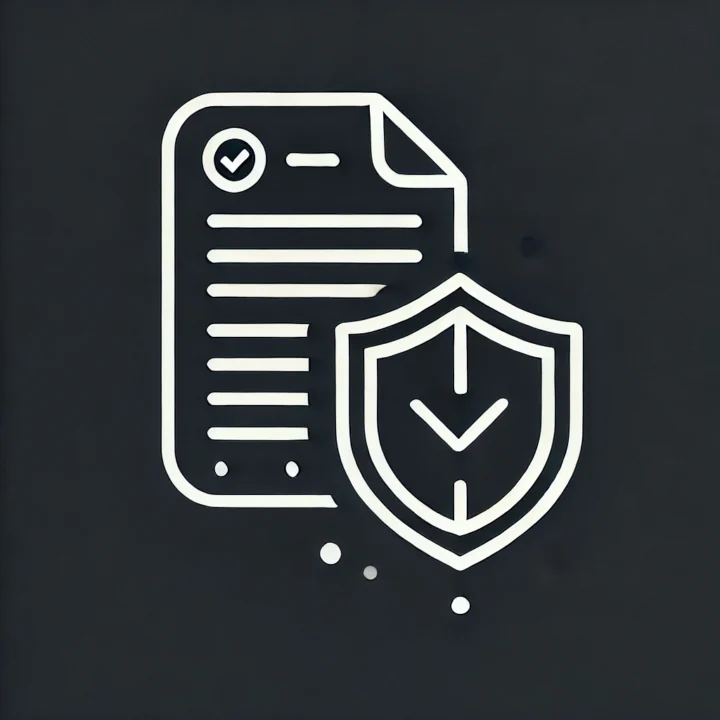Explaining ISO 27001 Control 8.27: Secure system architecture and engineering principles
Control 8.27 of ISO 27001 focuses on embedding security principles into the design, development, and maintenance of information systems. By applying foundational engineering practices—such as “security by design,” “defense in depth,” and “zero trust”—organizations ensure that business, data, application, and technology layers are resilient against known and up-and-coming threats.

ISO 27001:2022 Annex A Control 8.27
Control Type
- Preventive
Information Security Properties
- Confidentiality
- Integrity
- Availability
Cybersecurity Concepts
- Protect
Operational Capabilities
- Application Security
- System and Network Security
Security Domains
- Protection
Objective of ISO 27001 Control 8.27
The objective of Control 8.27 is simple yet transformative: to establish, document, and apply secure system architecture and engineering principles across your organization’s information systems. By doing so, you ensure confidentiality, integrity, and availability while minimizing vulnerabilities.
Vulnerabilities in your system architecture can serve as entry points for malicious actors. Security must be integrated into every layer of your system architecture:
- Business processes: Securely define workflows and responsibilities.
- Data layers: Protect sensitive data from unauthorized access or corruption.
- Applications: Harden your software to resist attacks.
- Technology infrastructure: Strengthen networks, hardware, and environments against breaches.
Purpose: Building Trust in Your Systems
Its purpose is to help you design systems that stand the test of time—and attacks. Whether it’s preventing data breaches or ensuring compliance, the principles of this control empower you to confidently operate in an increasingly hostile digital landscape.
Secure by Design: The Heart of Secure System Architecture
Your system should be Secure by Design, not just secure by chance. This means integrating security principles at every step of development:
- Defense in Depth: Layer multiple security mechanisms to safeguard against single points of failure.
- Zero Trust Model: Never trust; always verify. Every user, every request, every device is scrutinized.
- Least Privilege: Users get access to only what they need—no more, no less.
Fail Securely: Systems should fail in a way that maintains security, avoiding accidental exposure.
Best practice: don’t wait until the system is built to think about security. Start from day one, and you’ll save yourself a world of trouble (and expense) later.
Principles to Strengthen Your Security Stance
Control 8.27 guides you to use these principles for robust engineering:
Comprehensive Risk Analysis:
- Identify threats that could exploit your system’s vulnerabilities.
- Map out security controls to mitigate those risks effectively.
Integrated Security Controls:
- Make sure controls like encryption, access management, and firewalls work harmoniously.
- Align these controls with your overarching security architecture.
Adaptability to New Threats:
- Cyber threats evolve, and so must you. Review and update your systems regularly to keep pace.
Zero Trust Fundamentals:
- Assume breaches can happen anytime, anywhere.
- Enforce strict authentication and authorization for every access request, even internal ones.
Bringing Zero Trust to Life in Your Organization
The Zero Trust model isn’t just a buzzword; it’s a transformative approach. The Zero Trust model shifts the paradigm from perimeter-based security to a more granular, dynamic approach.
- Assume Breach: Operate as if your systems are already compromised, focusing on minimizing damage and detecting anomalies.
- Dynamic Access Control: Adjust access permissions in real-time based on user roles, locations, and device states.
- Encrypt Everything: Protect data from interception or manipulation, both in transit and at rest.
- Always Authenticate and Verify: Even internal users and systems must go through rigorous authentication processes.
Practical Implementation: From Theory to Reality
Don’t forget about resilience techniques like fault tolerance. If something fails, your system should bounce back without missing a beat.
- System Hardening: Remove unnecessary features and close unused ports. Think of it as decluttering your system for maximum efficiency and security.
- Segregation with Virtualization: Use virtual machines to isolate applications. If one app is compromised, the damage doesn’t spread.
- Tamper Resistance: Implement measures that detect and log tampering attempts, whether physical or digital.
Outsourced Development in Secure Engineering
Outsourcing development doesn’t mean outsourcing responsibility. By holding suppliers to the same standards as internal teams, you protect your organization from third-party vulnerabilities. Outsourced projects should align with your security goals:
- Clearly define security requirements in contracts and agreements.
- Conduct regular security audits of vendor practices.
- Require documentation and testing of security controls before accepting deliverables.
Templates That Could Assist with This Control
Implementing secure system architecture and engineering principles can be challenging without clear, standardized documentation and procedures. Below are examples of templates that can greatly streamline and reinforce compliance with Control 8.27.
Secure Architecture Documentation Template
- Purpose: Provides a structured approach to capturing and organizing information about system components, data flows, and applied security controls.
- Benefits:
- Ensures consistent documentation of security measures across different projects.
- Encourages clear articulation of business, data, application, and technology layers.
- Helps developers and security teams quickly identify gaps, potential misconfigurations, or missing controls.
Secure Coding and Design Checklist
- Purpose: Guides developers through a set of best practices and mandatory security considerations during coding and system design.
- Benefits:
- Covers fundamental topics such as secure input validation, output encoding, session management, and error handling.
- Promotes “security by design” by integrating security checkpoints early in the development lifecycle.
- Reduces common coding errors that can lead to vulnerabilities, such as SQL injection or cross-site scripting.
Threat Modeling and Risk Assessment Template
- Purpose: Helps security architects and development teams systematically identify threats, determine risk levels, and define mitigation strategies.
- Benefits:
- Streamlines the process of mapping out attack vectors against specific system components.
- Encourages collaboration among stakeholders to prioritize and address high-risk areas first.
- Ensures documented, repeatable risk assessment procedures that can be revisited as threats change.
Secure Development Policy Template
- Purpose: Defines the rules and responsibilities for conducting secure development activities in alignment with ISO 27001 requirements.
- Benefits:
- Offers a clear policy framework for integrating security into each phase of development.
- Sets the baseline expectations for secure coding, access control, and testing.
- Helps maintain consistent practices across different projects and development teams.
Supplier Security Requirements Template
- Purpose: Standardizes the inclusion of security expectations and contractual obligations for any outsourced development or third-party services.
- Benefits:
- Clarifies roles and responsibilities regarding secure engineering practices, code reviews, and vulnerability assessments.
- Simplifies compliance checks by setting clear benchmarks for security deliverables.
- Helps ensure consistent application of your organization’s security principles, even when development is external.
Security Testing and Verification Checklist
- Purpose: Outlines the key steps and considerations for conducting security-focused reviews (e.g., code reviews, vulnerability scans, penetration tests).
- Benefits:
- Ensures no critical steps are overlooked during testing.
- Documents findings in a structured format for easier tracking and remediation.
- Facilitates continuous improvement of the testing process as threats and tools develop.
Using the Templates Effectively
Training and Onboarding
Provide guidance and short training sessions on how to use these templates effectively. This ensures everyone understands both why and how they should be used.Customization
Tailor each template to the specific context of the project or product. A standardized base is a great start, but slight modifications can make it more relevant and helpful.Integration in the Development Lifecycle
Make templates a mandatory part of project gates (e.g., design reviews, test sign-offs). Requiring completed documentation at each phase reinforces secure practices throughout the lifecycle.Regular Review and Updates
Continuously revise your templates to address new threats, incorporate lessons learned from security incidents, and align with updates to ISO 27001 and other standards.
Correlations with Other ISO 27001 Controls
Control 8.27 doesn’t operate in isolation. It aligns with and complements other controls in ISO 27001:
- Control 5.12: Classification of information
- Control 5.15: Access Control Principles
- Control 5.16: Identity management
- Control 5.17: Authentication information
- Control 5.18: Access rights
- Control 8.2: Privileged access rights
- Control 8.5: Secure Authentication


